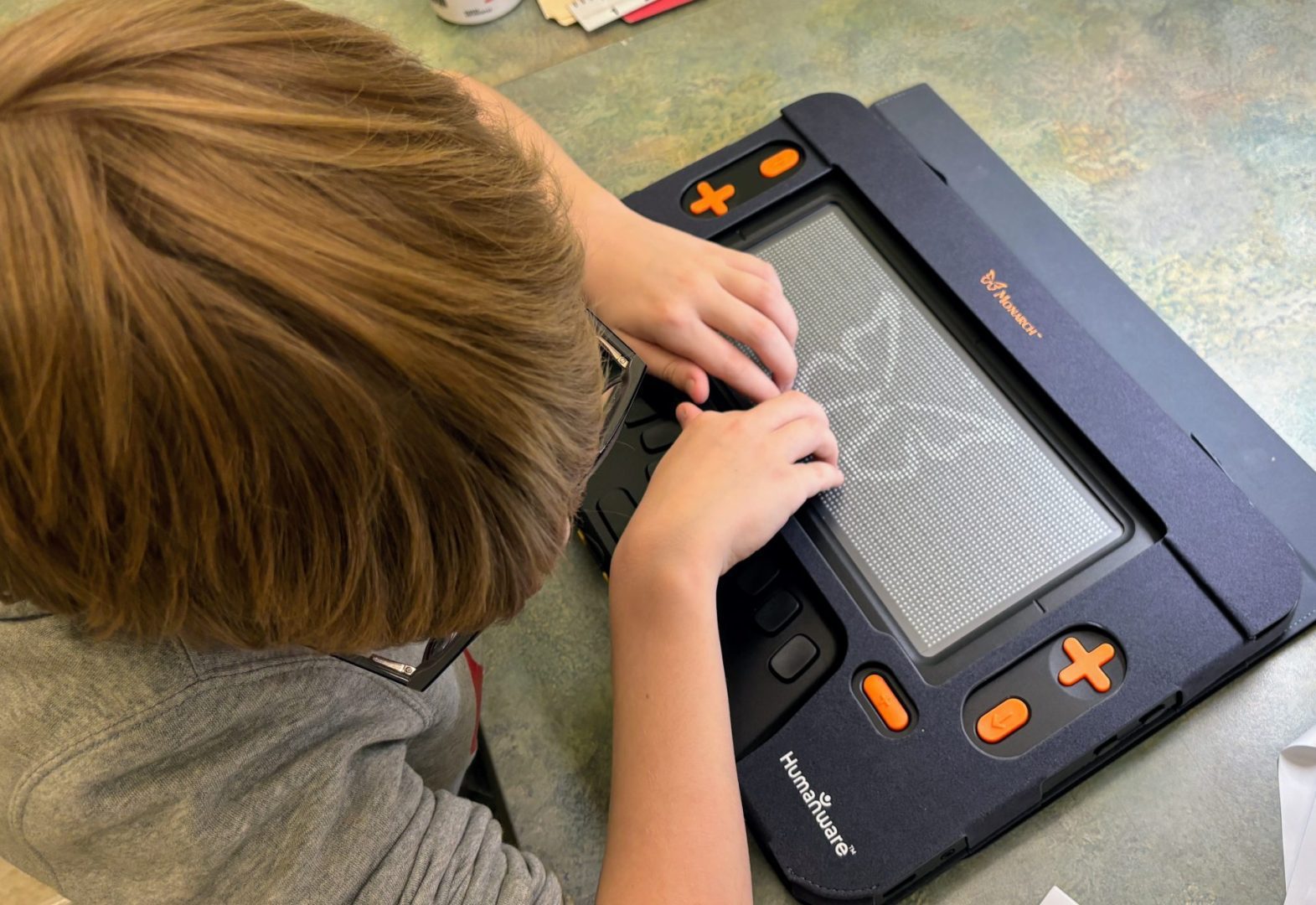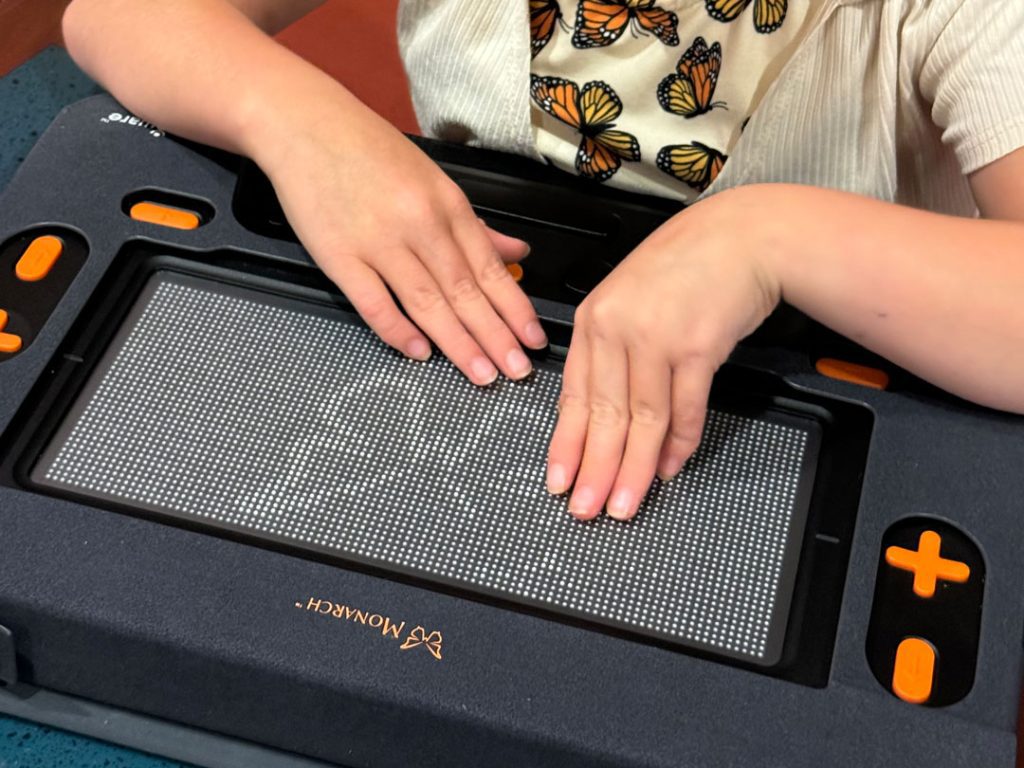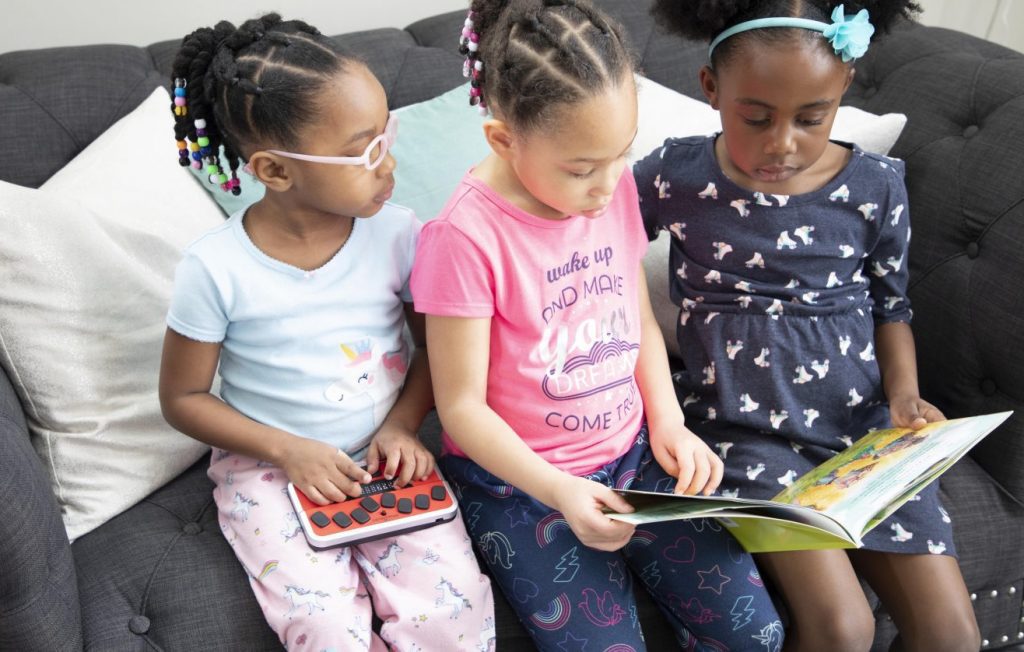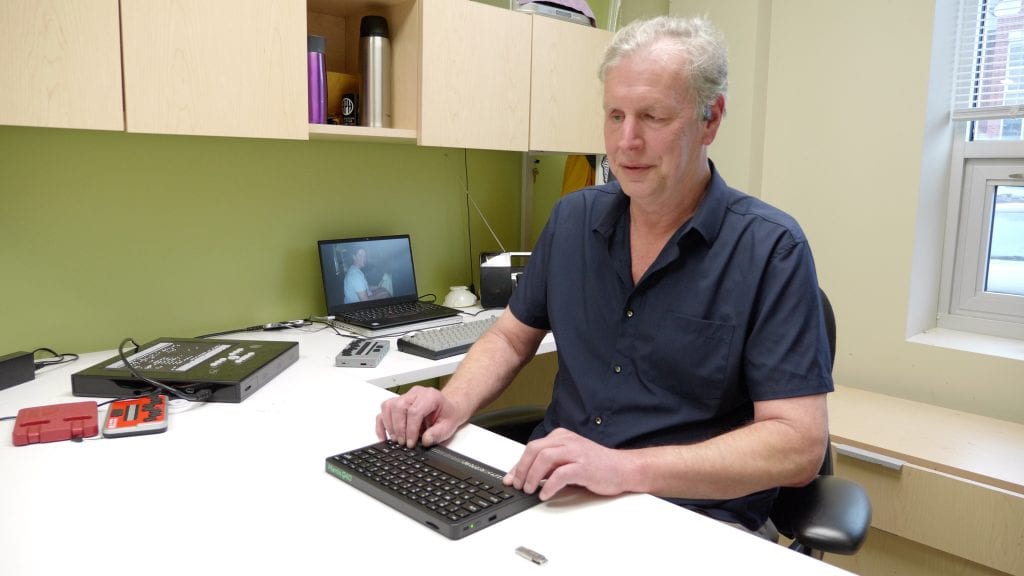To ensure gift delivery by 12/25, please place orders via UPS shipping no later than 12/17.
CloseMonarch Field Testing is Complete: What Comes Next?

Friday, December 1st marked the completion of a six-week field test for the Monarch. While field testers and students spent the first three weeks getting used to navigating menus, skill building, and learning how to operate the Monarch, the last three weeks were spent honing in on building those navigation skills and putting them to use─because you can’t do one without the other. Tasked with reading through a tactile graphic, students were required to answer questions about the graphic by looking through a bar chart that had pet names, pet types, and students’ names, then filling out a questionnaire based off the chart.
Three of the primary objectives for the last half of Monarch field testing were: getting connected to WiFi, exploring the tactile graphics image library, and completing a scavenger hunt─the Mystery of the Monarch. The scavenger hunt was designed to lead students through the Monarch and its many menus to a questionnaire at the end left by the development team. The specific questions and students’ answers were left for developers to find in an effort to learn more about what the students disliked, liked, or even LOVED about the Monarch.
One of the favorite features for the students was the ability to explore the tactile graphics image library on-demand. Instead of having to wait weeks, students can now explore these new graphics in mere seconds. While field testers loved the tactile graphics image library, they equally loved KeySoft,─the user interface the Monarch uses. Similar towhat the Mantis and Chameleon use, many of the students are already familiar with this experience, which means that teachers can teach one device and the skills are transferrable. Jason Martin, Technical Innovations Product Manager at APH, says that from a technology standpoint “The tactile display is such a game changer. With the ability to put graphics and braille on the same surface, never before seen apps will be able to be developed. Adding in these multiple lines changes the tactile experience entirely.”
The vast majority of field testers became even more engaged during the last half of field testing, flourishing in their use of the Monarch. Jason compared it to being like going from a color TV back to black and white. One field tester said, “I can’t imagine going back to an older braille display.” Another commented on how it really helped their students with reading, saying “Many students struggled with engagement in reading and this device really helped them with that. It provided them the excitement they had been missing before.” When asked what it was like to work with the field testers Jason said, “Seeing the TVIs and AT Professionals working with their students and learning this new technology. It was really cool to see their excitement and inspiration. When there was a problem that they couldn’t figure out and then you saw the ‘aha’ moment when they fixed it. That’s been great!”
The Monarch is going to create a demand for products that use tactile graphics. “There’s nothing quite like the Monarch,” says Jason. “While there are other multi-line braille displays out there, the Monarch offers so many profound quality of life improvements when you consider that things such as phone numbers and music playlists can now be listed out in a tactile graphic chart. When we start exploring Monarch applications, people are going to be surprised at the number of graphics that are out there and the things they are going to be exposed to that they weren’t before. We are all aware that this is an important product, not just for APH, but for braille in general.”
Greg Stilson, APH’s Head of Global Technology Innovation has been co-leading this project since it began back in 2020. “We have heard so many companies say that they have finally created this concept many of us have referred to as the Holy Braille, only to find out that their funding has run out, or they never included blind people in the development process, resulting in the concepts never seeing the light of day,” says Greg. “When we started on this project, we knew we absolutely could not do it ourselves. It is simply too big and too important. We immediately looked for partners, both on the development side as well as the user advocacy side. This led to our partnership with HumanWare from the manufacturing and software perspective, the National Federation of the Blind to ensure blind people are at the center of everything we do, and DOT Inc. as our braille cell provider. We knew the braille standard had to change to ensure braille would be ready for the next century, which led to APH working with the DAISY Consortium and over 40 international partners to create the new eBraille standard. With all of this work happening over the past 3 years, it was so incredibly rewarding to watch real students in real classrooms around the U.S. testing and using this device in their daily work. We learned a ton and are working to implement recommended changes based on field tester and student feedback. There is still much to do but completing this field test was a momentous accomplishment on the road to a multiline electronic braille future.”
What comes next? “Collecting data and application development,” says Jason. “Going through all of the data that has been generated through the field test, finding out what needs improvement, and taking action on those items. Understanding what we’re doing right and exploring that more. Finding out what applications work best for students and what teachers want. We’re pleased at the positive responses and criticisms we’ve gotten back. We’re excited to see what works and what doesn’t.”
Feedback from the Monarch Field Test Survey
“My student really appreciates the reading vs. editing mode, as he likes the fact that if he accidentally hits a key, he won’t mess up the book.”
“Moving through the document and answering questions was clear and motivating. It was a snap with the concept and a steady process of mastery.”
“My student was very interested in using the device. The map corresponded to a unit the student had just started and was in line with what the class was doing. She was eager to explore and asked a lot of questions about the graphics.”
“This was such a wonderful activity. My student talked about road trips she has taken with family and traced the lines of the states. She talked about where she is from and other states she has been to. She was so excited to explore everything in this way! What strategy did you use to teach the idea of physically zooming into a digital document? I actually didn’t have to use a strategy here—once her hands were on the map of the US, she figured it all out!!”
Share this article.
Related articles

Experience a New Point of View: Learning with the Monarch
Every experience is a learning experience. For students who are blind or low vision, this may include an introduction to...

Learning is Fun with the Braille Trail Reader!
APH’s Braille Trail Reader LE has been discontinued. We will continue to support the Braille Trail Reader by ensuring screen...

The Mind Behind the Mantis Q40
A seasoned and highly regarded member of the field of blindness, Larry Skutchan is a tech guru, always finding new...
